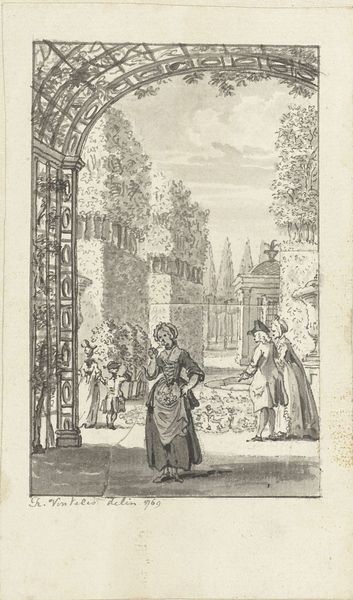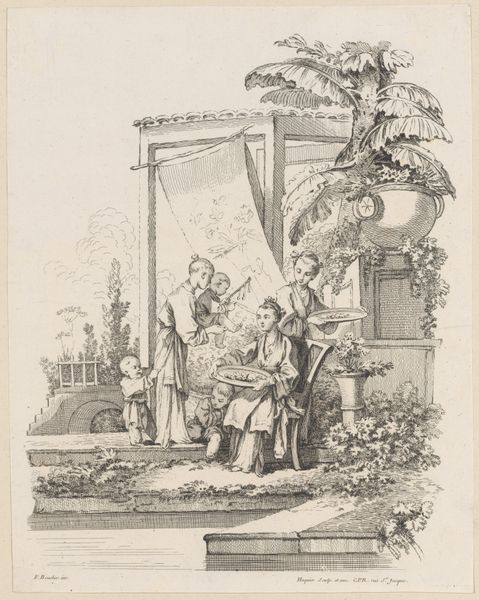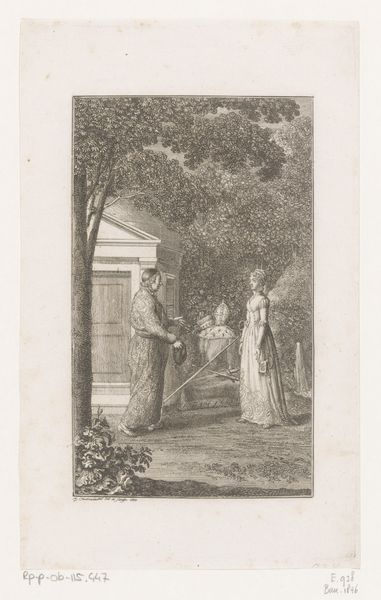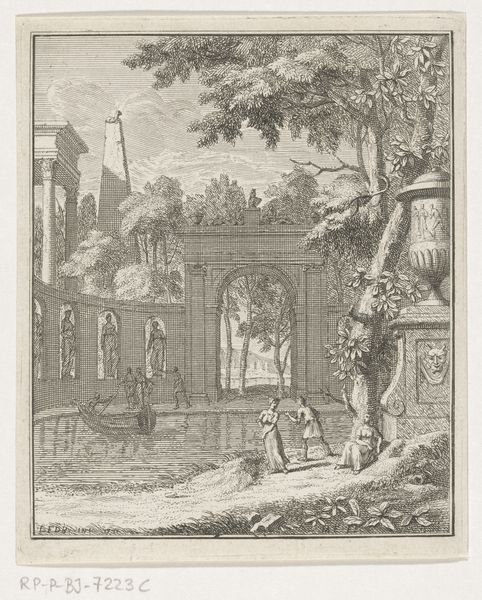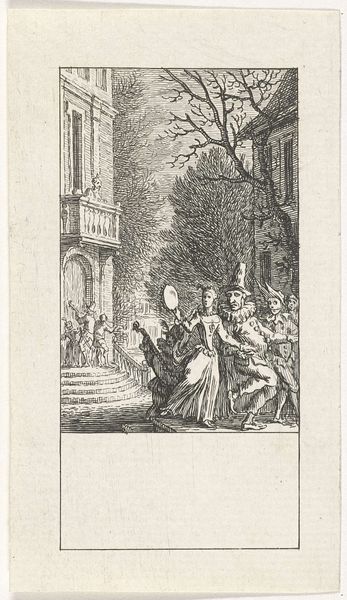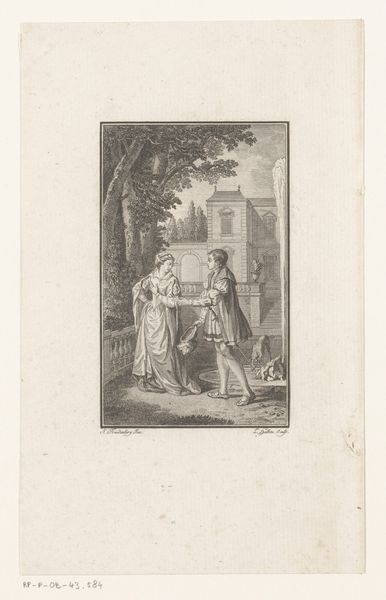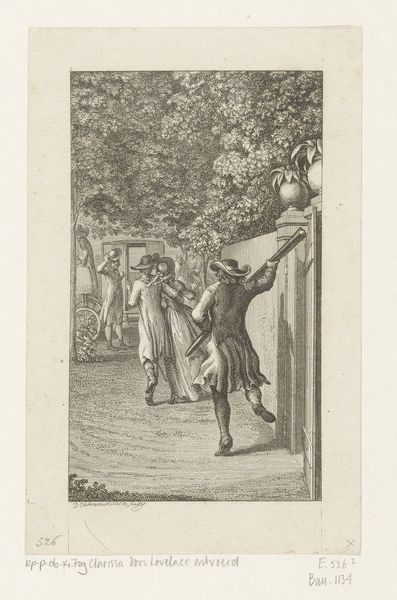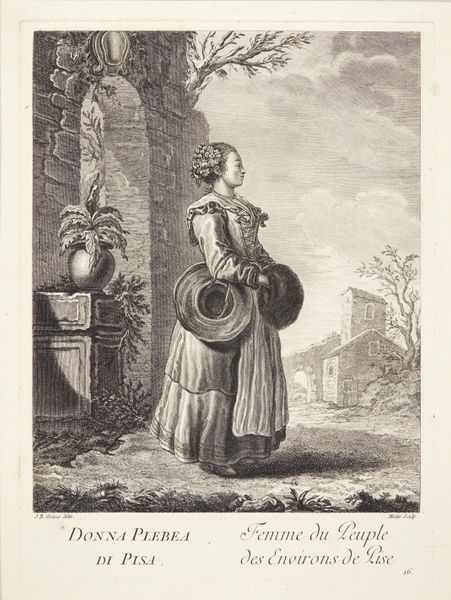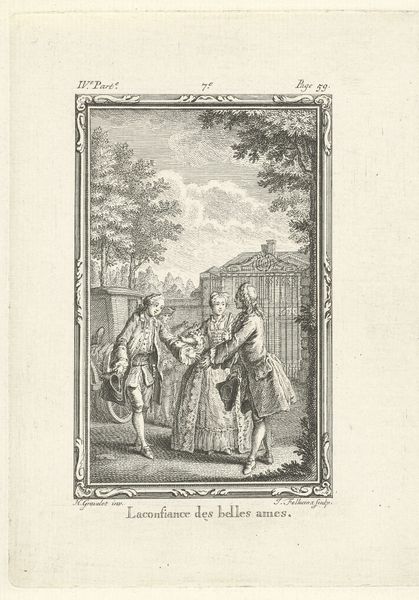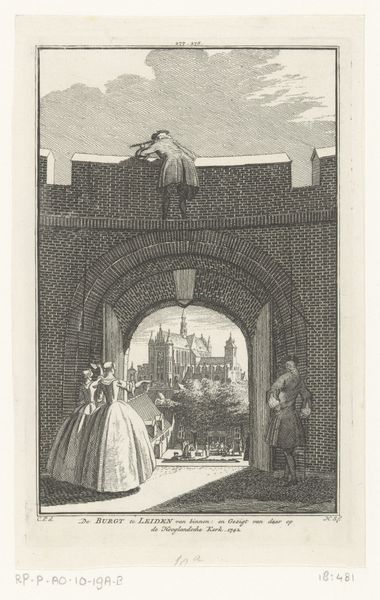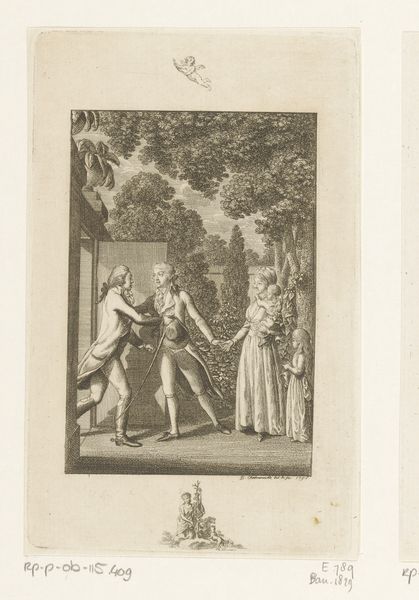
print, engraving
#
garden
# print
#
landscape
#
genre-painting
#
engraving
#
rococo
Dimensions: height 162 mm, width 92 mm
Copyright: Rijks Museum: Open Domain
Curator: This engraving from 1769 by Reinier Vinkeles is titled "Lente," currently held in the Rijksmuseum. What’s your initial take on the composition? Editor: Immediately striking is the meticulously crafted formal garden under the stylized trellis—the perspective almost feels staged, a theater for the eye with its clear progression to the backdrop. The grayscale palette imbues it with a sense of quietude, despite the activity depicted. Curator: Agreed. Looking closer at its production, the use of engraving speaks to the 18th-century printmaking industry—Vinkeles likely worked within a workshop structure, reproducing images for a growing consumer class keen to display art within their homes. These prints brought scenes of aristocratic leisure to a wider audience. Editor: Indeed, and focusing on form, the rhythmic patterns of the garden and trellis lead our gaze deliberately, creating this layered visual experience. The subtle tonal variations achieved through the engraving are remarkable; observe how light and shadow define space. Curator: The garden isn’t merely aesthetic though, is it? The carefully cultivated landscape symbolizes human control over nature, an idealized representation of power and wealth through management of land and labor. The figures present are posed almost as ornaments themselves within this constructed space. Editor: They certainly are! Consider, for example, how the figures’ elegant attire underscores the formality of their setting. We're given just enough detail to imagine the textures of their clothing, without sacrificing the cohesiveness of the scene. I feel like this helps us view it as a symbolic snapshot in time, not only an outdoor excursion. Curator: I agree. Ultimately, examining ‘Lente’ in relation to the Rococo period’s social and economic landscape reveals its purpose not just as a decorative piece, but as a documentation of values – ones based in the control and exploitation of resources. Editor: Absolutely. Analyzing the intrinsic elements unveils the artist’s engagement with spatial organization, light, and compositional strategy. Curator: By tracing its production and reception, it sheds light on the material realities underpinning artistic practice. Editor: A satisfying study indeed!
Comments
No comments
Be the first to comment and join the conversation on the ultimate creative platform.
